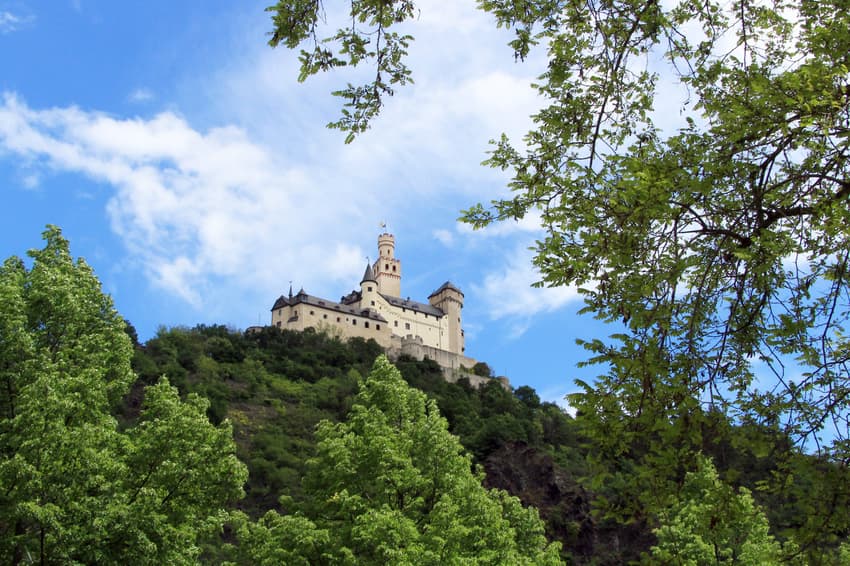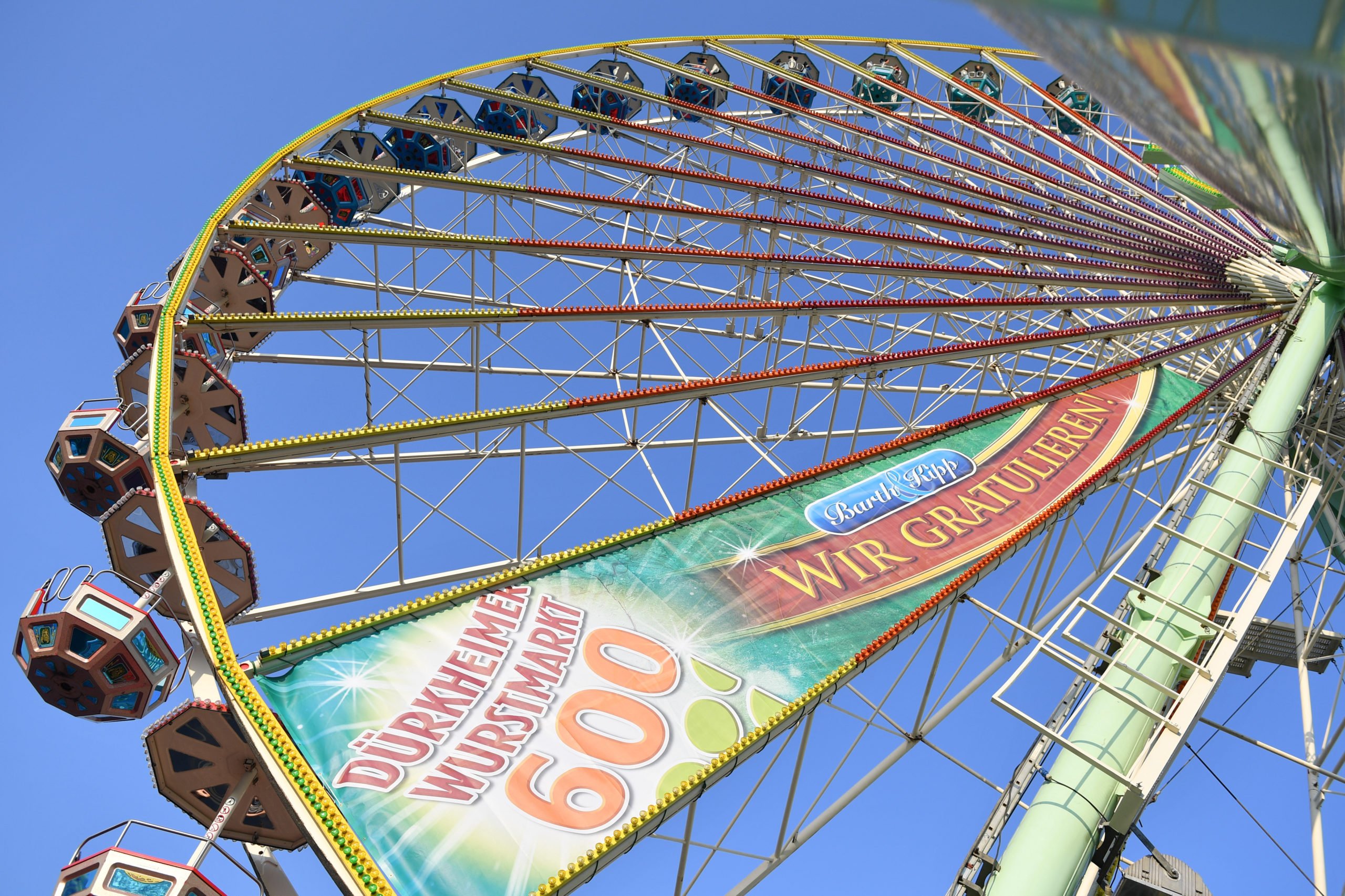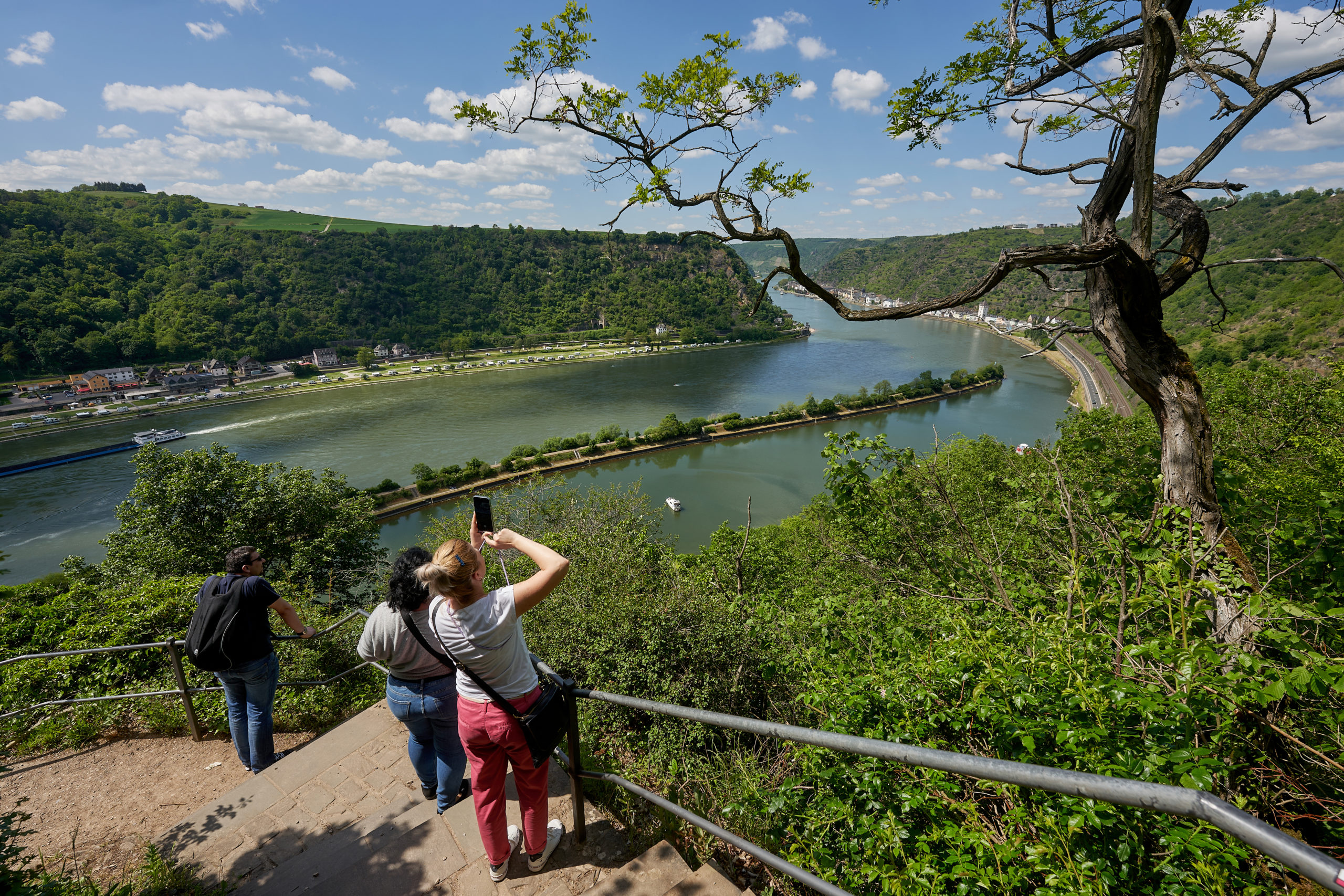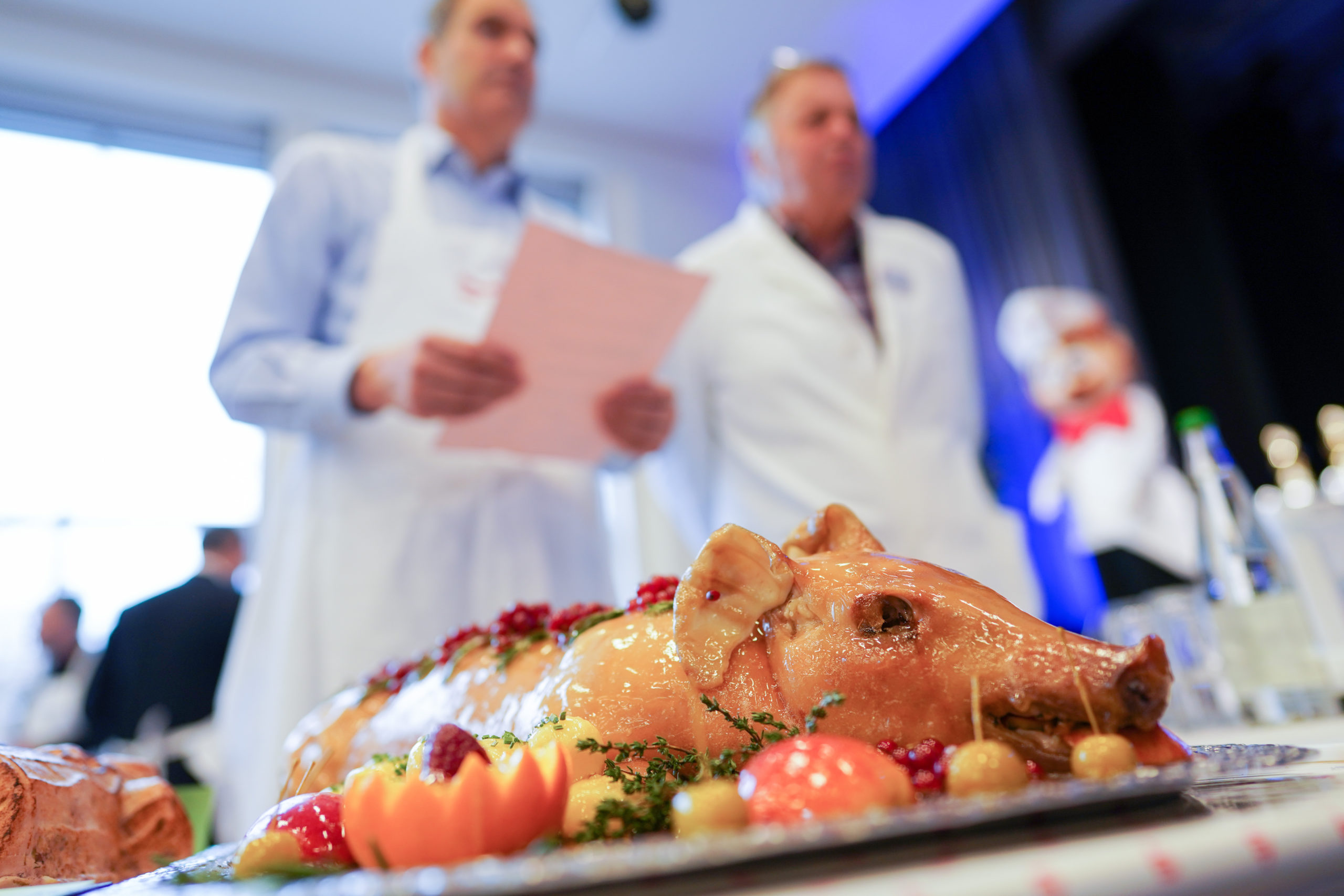10 things to know about Rhineland-Palatinate

How much do you know about Germany’s ninth largest state? Here are 10 historical and cultural facts to help you get to know the region better.
- A short history of the Pfalz
Located in the west of Germany, Rhineland-Palatinate (in German: Rheinland-Pfalz) was founded in August 1946 as the last state to be established in the Western zone of occupation after World War II, and soon after became part of the French zone.
The city of Mainz in the north of Rhineland-Palatinate - known for its pretty half-timbered houses and medieval squares - was named as the state capital.
- It even has its very own dialect – pfälzisch
Palatine German, or pfälzisch, is an amalgamation of many languages, in part due to its geography and history. Pfälzer have their own grammatical rules and French influences can be seen in the roots of some words.
There are even different variations within the region, such as Westpfälzisch, Nordpfälzisch, Vorderpfälzisch and Südpfälzisch.
The dialect is still spoken by many in the state, though mostly verbally and in more casual settings. Many Palatines are very proud of their language and have brought it with them when emigrating abroad, such as the US, where Pennsylvania Dutch is a form of pfälzisch.
Find out more about the distinct dialect and some common phrases here.
- Home to some famous faces
Helmut Kohl, the chancellor of Germany during the crucial era leading up to reunification and the years after, was a born and bred Pfälzer, growing up in the city of Ludwigshafen.
The US’ established military bases in the Palatinate, specifically in Ramstein and Kaiserslautern, mean many famous Americans with military parents were born in the region, including action film star Bruce Willis.
There’s also some links that many Pfälzer would choose to ignore, including former US president Donald Trump, whose paternal family hail from the village of Kallstadt in the region. Interestingly, the family behind the Heinz Company came from the same small village.
READ ALSO: Holiday like a local: Five of the best camping regions in Germany
- They favour wine over beer
While Germany as a whole is known for its beer culture, Rhineland-Palatinate is known for its wine, due to its extensive winegrowing region, and is the leading producer of wine in the country.
The state boasts over 250,000 acres of vineyards, with some of the most famous German wines being Riesling, Müller-Thurgau and Spätburgunder and the classic sparkling wine, Sekt.
Throughout the year, the state also hosts a number of wine festivals and Weinwanderungen along the famous wine route.
They honour their wine culture so much that Rhineland-Palatinate is the only German Bundesland (federal state) to have a cabinet minister for winegrowing.
- Pfälzer love a celebration almost as much as their wine
The Dürkheimer Wurstmarkt is the world’s biggest wine festival held annually in September in the spa town of Bad Dürkheim. The festival features fairground rides and food stalls selling regional specialities (as the name suggests, sausages) and of course wine.
The town is also home to the largest wine barrel in the world - although it is not used as a wine storage, instead containing a restaurant.

A large Ferris wheel at the 600th Dürkheimer Wurstmarkt in Bad Durkheim in 2016. Photo: picture alliance / dpa | Uwe Anspach
The famous Mainz carnival is one of the biggest festivities of Germany’s fifth season and takes place right in the Rhineland’s capital. Their Rosenmontag parade is known for having huge Schwellköpp, which are life-size figures made of papier-mâché, often resembling relevant politicians to make political statements.
READ ALSO: What you need to know about celebrating carnival in Germany
- There is some state rivalry
Like many places in Germany, there’s some natural state rivalry between neighbours. That is the case for Rhineland-Palatinate and neighbouring Saarland.
Although we can’t figure out quite why these two states seem to have it in for each other, it may have something to do with its history.
The Saarland was long governed by France after World War I until it was returned to Nazi Germany in 1935. Following WWII, the French military administration once more took control of the territory, until finally, in 1957, it became part of the Federal Republic. This back and forth, and close proximity both geographically and culturally with France, could be why the Pfälzer and Saarländer find themselves at odds.
It is more the case of friendly banter, so the rivalry shouldn’t be taken too seriously. And as seen in many a reddit thread, maybe it is Saarland itself that’s the problem – “Nobody in Germany likes Saarland, except the Saarländer”.
- A place of folklore
The Upper Middle Rhine Valley is not only a UNESCO World Heritage Site, but is home to a number of folklore tales, the most famous being that of The Lorelei, or Loreley.
Legend says there was once a beautiful young woman named Lorelei who threw herself into the Rhine and drowned after her heart was broken. She was then transformed into a siren whose sad, haunting singing lures drooling sailors to come crashing onto the rocks to their death. A statue of the Lorelei has been placed over the stretch of water near Sankt Goarshausen, as well as an amphitheatre that is also named after the woman.
Many German writers have written about the tale, including Heinrich Heine in his famous poem “Die Lorelei”.
 Walkers stop to enjoy the view from the Loreley Plateau along the Rhine. Photo: picture alliance/dpa | Thomas Frey
Walkers stop to enjoy the view from the Loreley Plateau along the Rhine. Photo: picture alliance/dpa | Thomas Frey
READ ALSO: Germany’s top myths and legends
- Lots of cultural sites to see
Rhineland-Palatinate is home to not just one UNESCO World Heritage Sites, but a whopping 14, nine of which are located in Trier, Germany’s oldest city. Often nicknamed the ‘Rome of the North’, Trier features a number of Roman ruins, including the Porta Nigra, a large city gate, a Roman bath and the palace Basilica of Constantine.
- There’s plenty of nature too
Over 42 percent of the state is covered by forests, notably the vast Pfälzer Forest nature park, making it the most forested state in Germany. The park features many walking routes, viewing towers and even castles.
The Palatinate also boasts several lakes, the rivers Moselle and of course Rhine, and even a mountain (der Erbeskopf), which makes it a perfect place for nature lovers and those looking for a nature escape from city life.
READ ALSO: Rhine valley – home to ‘river of destiny’
- And we can’t forget about the food!
Although you will of course find a bratwurst and some good German bread, Rhineland-Palatinate has a lot more to offer than that.
The most famous Palatinate dish is the Pfälzer Saumagen (translating literally to pig’s stomach), which is a combination of pork, sausage meat, potatoes, onions and spices that is cooked in an empty pig’s stomach. It is then cut into slices, sauteed and served with a side of sauerkraut. While the name is not the most appealing, I can personally attest to its great flavour.

Judges examine a pig-shaped Saumagen at a Saumagen cooking competition in Herxheim, Rhineland-Palatinate. Photo: picture alliance/dpa | Uwe Anspach
A speciality from the state capital, Spundekäs is a smooth cheese paste made from quark and seasoned with sweet paprika. It is usually served with mini pretzels as a starter or an accompaniment with some Palatinate wine.
Another popular dish is the Dampfnudel (“steamed noodles”), which is a sort of steamed white roll that can be eaten as a meal or as a dessert. The sweet version can be stuffed with plum sauce and traditionally served with a (sometimes boozy) vanilla sauce and has similarities to a Germknödel or Hefekloß.
Due to its proximity to France and the Alsace region, the Palatinate cuisine also features dishes such as Flammkuchen (or tarte flambée) and even escargots.
READ ALSO: QUIZ: How well do you know German food?
Comments
See Also
- A short history of the Pfalz
Located in the west of Germany, Rhineland-Palatinate (in German: Rheinland-Pfalz) was founded in August 1946 as the last state to be established in the Western zone of occupation after World War II, and soon after became part of the French zone.
The city of Mainz in the north of Rhineland-Palatinate - known for its pretty half-timbered houses and medieval squares - was named as the state capital.
- It even has its very own dialect – pfälzisch
Palatine German, or pfälzisch, is an amalgamation of many languages, in part due to its geography and history. Pfälzer have their own grammatical rules and French influences can be seen in the roots of some words.
There are even different variations within the region, such as Westpfälzisch, Nordpfälzisch, Vorderpfälzisch and Südpfälzisch.
The dialect is still spoken by many in the state, though mostly verbally and in more casual settings. Many Palatines are very proud of their language and have brought it with them when emigrating abroad, such as the US, where Pennsylvania Dutch is a form of pfälzisch.
Find out more about the distinct dialect and some common phrases here.
- Home to some famous faces
Helmut Kohl, the chancellor of Germany during the crucial era leading up to reunification and the years after, was a born and bred Pfälzer, growing up in the city of Ludwigshafen.
The US’ established military bases in the Palatinate, specifically in Ramstein and Kaiserslautern, mean many famous Americans with military parents were born in the region, including action film star Bruce Willis.
There’s also some links that many Pfälzer would choose to ignore, including former US president Donald Trump, whose paternal family hail from the village of Kallstadt in the region. Interestingly, the family behind the Heinz Company came from the same small village.
READ ALSO: Holiday like a local: Five of the best camping regions in Germany
- They favour wine over beer
While Germany as a whole is known for its beer culture, Rhineland-Palatinate is known for its wine, due to its extensive winegrowing region, and is the leading producer of wine in the country.
The state boasts over 250,000 acres of vineyards, with some of the most famous German wines being Riesling, Müller-Thurgau and Spätburgunder and the classic sparkling wine, Sekt.
Throughout the year, the state also hosts a number of wine festivals and Weinwanderungen along the famous wine route.
They honour their wine culture so much that Rhineland-Palatinate is the only German Bundesland (federal state) to have a cabinet minister for winegrowing.
- Pfälzer love a celebration almost as much as their wine
The Dürkheimer Wurstmarkt is the world’s biggest wine festival held annually in September in the spa town of Bad Dürkheim. The festival features fairground rides and food stalls selling regional specialities (as the name suggests, sausages) and of course wine.
The town is also home to the largest wine barrel in the world - although it is not used as a wine storage, instead containing a restaurant.

The famous Mainz carnival is one of the biggest festivities of Germany’s fifth season and takes place right in the Rhineland’s capital. Their Rosenmontag parade is known for having huge Schwellköpp, which are life-size figures made of papier-mâché, often resembling relevant politicians to make political statements.
READ ALSO: What you need to know about celebrating carnival in Germany
- There is some state rivalry
Like many places in Germany, there’s some natural state rivalry between neighbours. That is the case for Rhineland-Palatinate and neighbouring Saarland.
Although we can’t figure out quite why these two states seem to have it in for each other, it may have something to do with its history.
The Saarland was long governed by France after World War I until it was returned to Nazi Germany in 1935. Following WWII, the French military administration once more took control of the territory, until finally, in 1957, it became part of the Federal Republic. This back and forth, and close proximity both geographically and culturally with France, could be why the Pfälzer and Saarländer find themselves at odds.
It is more the case of friendly banter, so the rivalry shouldn’t be taken too seriously. And as seen in many a reddit thread, maybe it is Saarland itself that’s the problem – “Nobody in Germany likes Saarland, except the Saarländer”.
- A place of folklore
The Upper Middle Rhine Valley is not only a UNESCO World Heritage Site, but is home to a number of folklore tales, the most famous being that of The Lorelei, or Loreley.
Legend says there was once a beautiful young woman named Lorelei who threw herself into the Rhine and drowned after her heart was broken. She was then transformed into a siren whose sad, haunting singing lures drooling sailors to come crashing onto the rocks to their death. A statue of the Lorelei has been placed over the stretch of water near Sankt Goarshausen, as well as an amphitheatre that is also named after the woman.
Many German writers have written about the tale, including Heinrich Heine in his famous poem “Die Lorelei”.

READ ALSO: Germany’s top myths and legends
- Lots of cultural sites to see
Rhineland-Palatinate is home to not just one UNESCO World Heritage Sites, but a whopping 14, nine of which are located in Trier, Germany’s oldest city. Often nicknamed the ‘Rome of the North’, Trier features a number of Roman ruins, including the Porta Nigra, a large city gate, a Roman bath and the palace Basilica of Constantine.
- There’s plenty of nature too
Over 42 percent of the state is covered by forests, notably the vast Pfälzer Forest nature park, making it the most forested state in Germany. The park features many walking routes, viewing towers and even castles.
The Palatinate also boasts several lakes, the rivers Moselle and of course Rhine, and even a mountain (der Erbeskopf), which makes it a perfect place for nature lovers and those looking for a nature escape from city life.
READ ALSO: Rhine valley – home to ‘river of destiny’
- And we can’t forget about the food!
Although you will of course find a bratwurst and some good German bread, Rhineland-Palatinate has a lot more to offer than that.
The most famous Palatinate dish is the Pfälzer Saumagen (translating literally to pig’s stomach), which is a combination of pork, sausage meat, potatoes, onions and spices that is cooked in an empty pig’s stomach. It is then cut into slices, sauteed and served with a side of sauerkraut. While the name is not the most appealing, I can personally attest to its great flavour.

A speciality from the state capital, Spundekäs is a smooth cheese paste made from quark and seasoned with sweet paprika. It is usually served with mini pretzels as a starter or an accompaniment with some Palatinate wine.
Another popular dish is the Dampfnudel (“steamed noodles”), which is a sort of steamed white roll that can be eaten as a meal or as a dessert. The sweet version can be stuffed with plum sauce and traditionally served with a (sometimes boozy) vanilla sauce and has similarities to a Germknödel or Hefekloß.
Due to its proximity to France and the Alsace region, the Palatinate cuisine also features dishes such as Flammkuchen (or tarte flambée) and even escargots.
READ ALSO: QUIZ: How well do you know German food?
Join the conversation in our comments section below. Share your own views and experience and if you have a question or suggestion for our journalists then email us at [email protected].
Please keep comments civil, constructive and on topic – and make sure to read our terms of use before getting involved.
Please log in here to leave a comment.